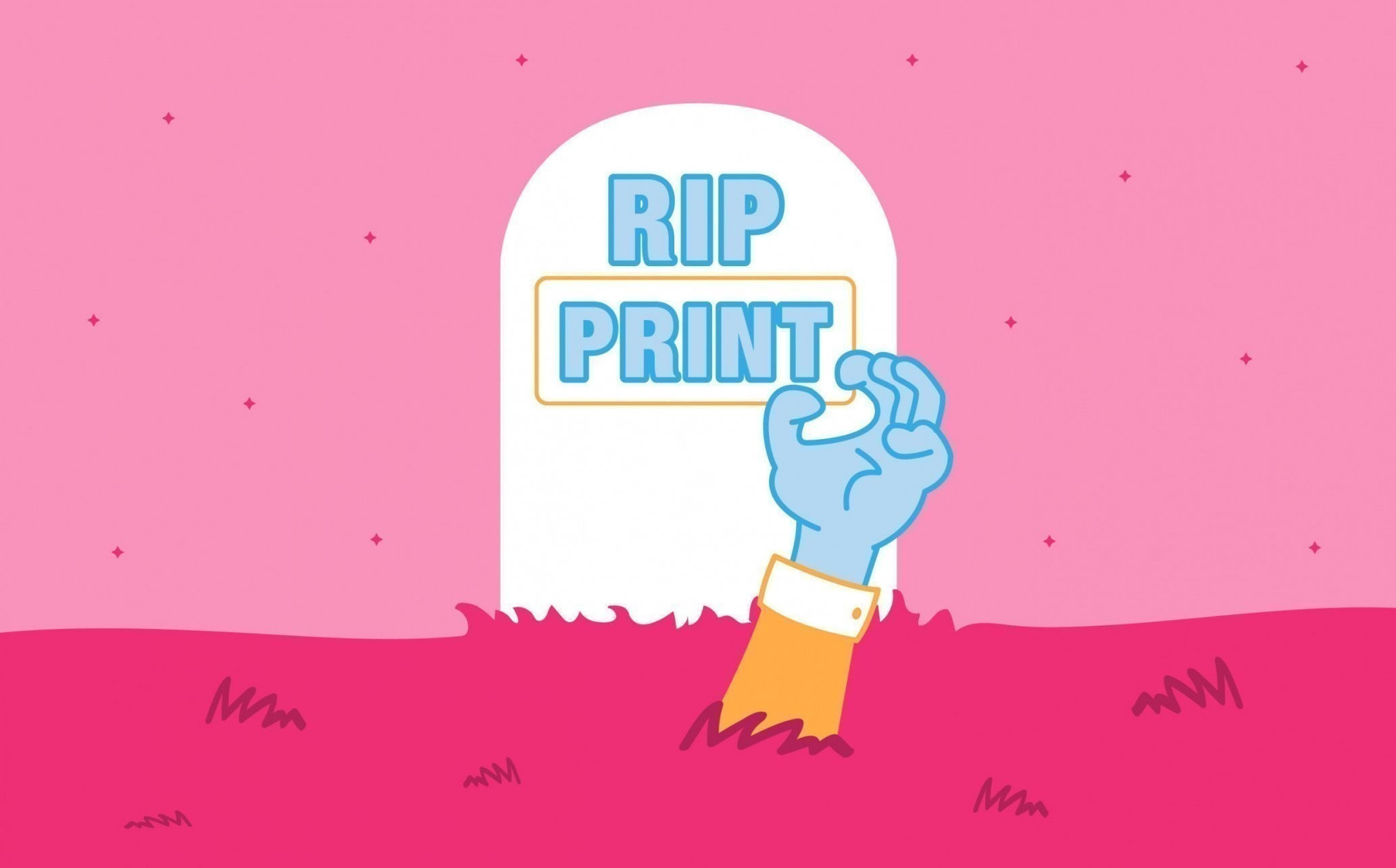Digital marketing gurus love to declare the death of print advertising—but we’re far from scheduling its burial. According to data from many sources, print advertising is alive and thriving. It has come back from the grave, it’s hungry for more, and it should be part of your overall marketing plan. Need further convincing? Let’s take a look at why it still works.
You Don’t Have to Choose Just One
Of course, print alone can’t hack it in our digital world. But a study by MediaMax Network found that combining print advertising with digital is far more effective than digital campaigns alone. Brands gain higher awareness when they present messages through a combination of print and online media. Consistent messaging across multiple marketing channels means more touch points with potential customers. And according to a report from PriceWaterhouseCoopers, consumers don’t care whether your brand reaches them digitally or through a more traditional medium—they just want “more flexibility and freedom” to discover and interact with brands on their own terms.
One great example of how we put this to work for a client is Louisville Slugger Museum & Factory. We recently created a new website for them, and it has translated well across all mediums for the brand. Consumers get the same message from print ads, visitors guides, digital marketing and signage: It’s fun right off the bat™. Many design elements are also carried through from website to ads, so the look and feel is consistent no matter where the consumer interacts with the brand.
Cold Hard Facts
Even more convincing are the numbers that prove print marketing draws people in like zombies to fresh brains. According to research, 56 percent of customers feel they can trust print marketing more than other types of marketing. Another study shows that 80 percent of homes actually read through direct mail offers, which means most potential customers are at least looking at their mail. If you send the right message, you could get them to act. In fact, the Direct Marketing Association found that the majority of consumers (65 percent) say they have made a purchase before resulting from a direct mail offer.
But the attraction isn’t all based on products and services. Studies show that 78 percent of donations to nonprofit organizations are raised through direct mail efforts, so marketing for a good cause can get people’s attention, too.
American advertisers spend roughly $167 per person on direct mail annually, which yields $2,095 worth of goods sold each year—a 1,300 percent return on investment. You may be thinking, “I’ve gotta get a piece of this action.” But before you crank out a new print campaign, consider what the medium offers and how best to harness its power to deliver your message.
Print Can Be Provocative
Brands can create a more personal experience through print marketing—one that connects with consumers like no other medium. Print is associated with the top of the marketing funnel and works well for achieving a broad reach. Through print marketing you can create more personal brand experiences. You can design exactly what captures your audience’s attention with color, photos, die cuts, folds, textures and other tactile features that get consumers to interact with your brand. A thoughtful, compelling print ad begs consumers to read it.
Just like the slow guy getting eaten in every zombie movie, print is also reliable. You can touch it, feel it, save it and read it again. Consumers gain a closer connection with print marketing because they must engage with it on a physical level. Holding an ad in your hand (even if it’s in a magazine) is a more physical experience than scrolling past a banner on a website.
Its lengthy shelf life, broad reach and ability to engage more than one reader over time makes print a great vehicle for brand identity advertising. Where digital marketing is great for grabbing a direct response, print lingers and takes longer for a consumer to absorb the message. Studies have shown that being able to touch and feel something you read can help you recall its message longer than with a digital medium, so messages on print are more likely to stick.
If your marketing plan is all digital, adding print marketing can bring it back from the dead. Ensure your digital and traditional work together and share a common message to help increase its frequency. Print delivers brand recognition, and digital marketing helps you can gain direct response and capture consumer data. That’s where you’ll gain more ROI and make the sale.

